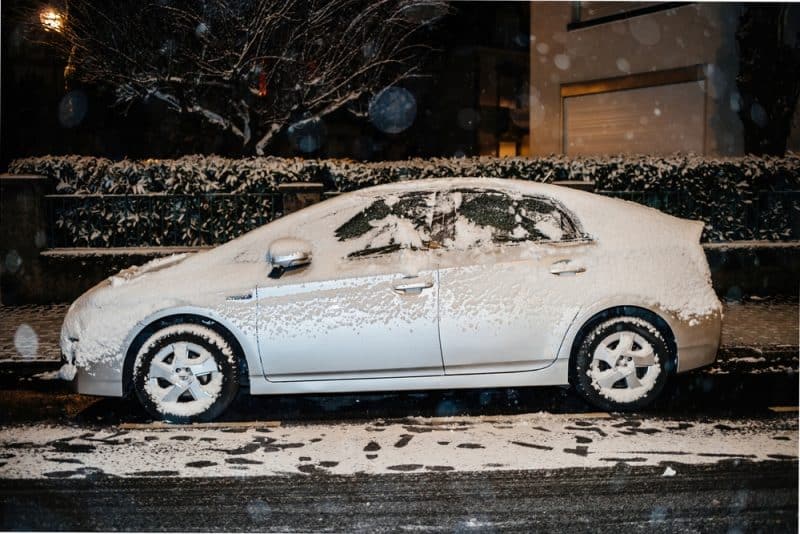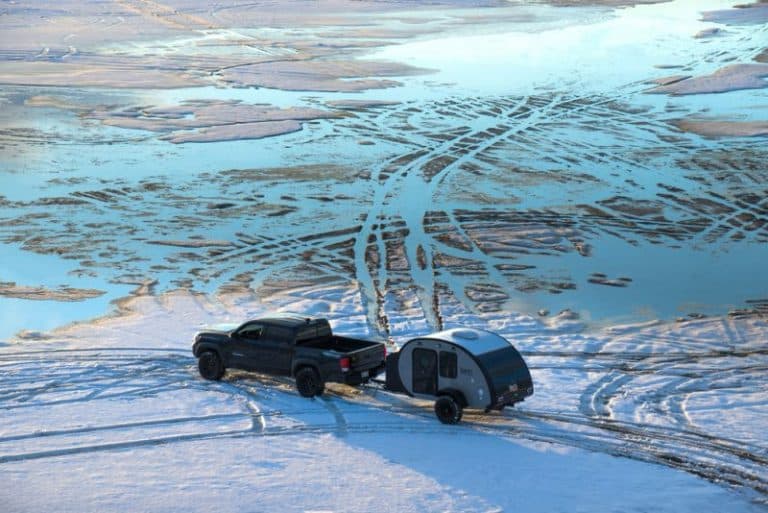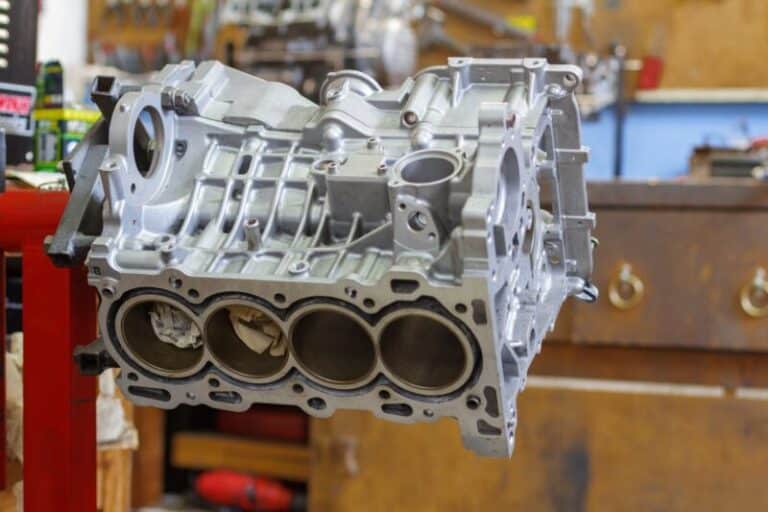Can A Toyota Yaris Drive In The Snow? (Explained)
Looking at the Toyota Yaris, you wouldn’t call it the sturdiest car. Its delicate nature would leave you questioning its winter competencies.
However, the Toyota Yaris has some surprises behind those wheels that help it manage winter.
The Toyota Yaris can drive in the snow; it handles itself excellently even in these frosty conditions. This is because of many features like Traction Control, Vehicle Stability Assist and Brake Assist. These components and their collaborative efforts support its journey in the snow.
Is Toyota Yaris Good in Snow?

The Toyota Yaris manages itself brilliantly in snow. Though it’s dainty compared to its peers, this makes it easy to recover control when traversing along glib, snowy roads.
The Yaris has a low center of gravity compared to others. This attribute helps it greatly against rolling over on ice or snow.
The Toyota Yaris has some features that assist it against the snow. They are:
#1. Traction Control
This feature is also referred to as TRAC. One of Toyota’s Star Safety Systems supports safe driving across various circumstances in road conditions.
The job of the TRAC is to improve driving conditions during winter on all Yaris models. It checks the wheel when it is accelerating on slippery roads and prevents it from slipping away from the road.
Without this feature, your tires would rotate quickly in a bid to find traction. This lack of traction would make your car slip off the road.
TRAC prevents this by calculating the number of spins by your wheel. Once it discovers additional wheel rotations, the TRAC brings down the engine to permit appropriate contact between the Toyota Yaris tires and the road.
This sustains some grip on the road and keeps the vehicle en route.
#2. Vehicle Stability Control – VSC
There’s always that possibility of losing control when riding on ice or snow. This feature helps you keep the car steady as you navigate dangerous wintertime roads.
What this feature does is decrease engine power once it senses steering loss. It does this by using information gotten from sensors on the steering wheel.
This information helps determine if the car is losing traction or heading off course.
It works to detect loss of control and purchase. Once this happens, it decreases engine power directed to the wheels to slow down the car.
It follows this up by applying brake pressure on both sides of the vehicle to get it back on course. The mix of these actions averts the possibility of the car sliding off on an icy road.
#3. Fog lights
You’ll agree that it’s not always easy discerning what’s ahead when driving during winter. The heavily-pouring snow can make visibility low can cause crashes at any time.
Toyota Yaris fog lights give exceptional visibility when needed on dark snowy nights. Their light particles are robust and not quickly scattered like regular lights.
#4. Brake Assist
With how much slipperiness is on the ice, emergency braking doesn’t always turn out successfully. There’s always the case of longer braking distances as the tires can continue sliding after braking.
This can cause fatal crashes. The brake-assists feature on the Toyota Yaris helps against crashes by adding more brake power whenever you need emergency braking.
It gives about a 30% reduction to the stopping time, stopping the car quickly to prevent any crash.
#5. Anti-Lock Braking System/Electronic Brake-Force Distribution
Braking on dry roads is quite a simple task. On icy roads, though, that’s where you need more power.
Nonetheless, applying too much brake power might cause the wheels to lock up and make your car slide off the road.
The Anti-locking Braking System (ABS) averts such disasters. Using magnetic wheel speed sensors, it assesses all four wheels of a car as it moves.
When the brakes are applied, it can pick up any wheel decelerating hastily. This is a sign for lock-up.
To avoid locking the wheel(s), the ABS relaxes the braking pressure for a moment to permit the affected wheel to recoup speed. This action stops the wheel from locking and prevents skidding.
The Electronic Brake-Force Distribution (EBFD) operates similarly to ABS. What this feature does differently is that it shares the braking force across the wheels.
This reduces the likelihood of the wheels locking.
Furthermore, Toyota Yaris owners can improve their vehicle’s chances on the snow by installing snow chains on the front tires.
Snow chains are a set of knits of metal chains. They are installed around a vehicle’s tires to provide added grip when driving in the snow.
Nonetheless, always make sure you abide by the directives of the chain manufacturer when installing them.
Also, you can get snow tires for your Yaris. The thread designs on snow tires have larger thread gaps than regular tires. They are very effective when used on snow.
How Reliable is the Toyota Yaris?
Recent models of the Toyota Yaris stand around the average subcompact vehicle class rating. They are agile cars with a refined interior, accessible features, and excellent fuel economy.
Therefore, ample seating space with many features adds to its capabilities. Because of this, Toyota offers the Yaris in hatchback and sedan body models.
It has a four-cylinder engine together with anything you would want in a small car. However, it is noticeably lacking in the acceleration department.
Toyota Yaris owners would enjoy the safety features in the vehicle.
It sports 15.8 cubic feet of space with spacious front seats. Even the back seats are generous enough, but taller passengers might not find enough headroom.
The Toyota Yaris models identify as Front-Wheel Drive (FWD) vehicles. The tires of the Toyota Yaris increase firmness and grip. You may look into this if Toyota makes AWD as well.
This is a credit to the engine’s influence on the front wheels driving the car onward.
It is also important to note that older models of the Yaris are not ideal for winter. They lack the features mentioned above that assist Toyota Yaris owners in driving on snow.
Models that entered the market after 2009 are better suited for winter.
Conclusion
The Toyota Yaris does well on snow. This is a credit to the many features that collaborate to help it move in the snow.
These features include fog light, brake assist, snow chains, snow tires, Traction control, etc. The Toyota Yaris is an excellent, agile, and delicate car with a four-cylinder engine.
It isn’t as fast as others but gives you the essential comfort you’d want from a vehicle.






